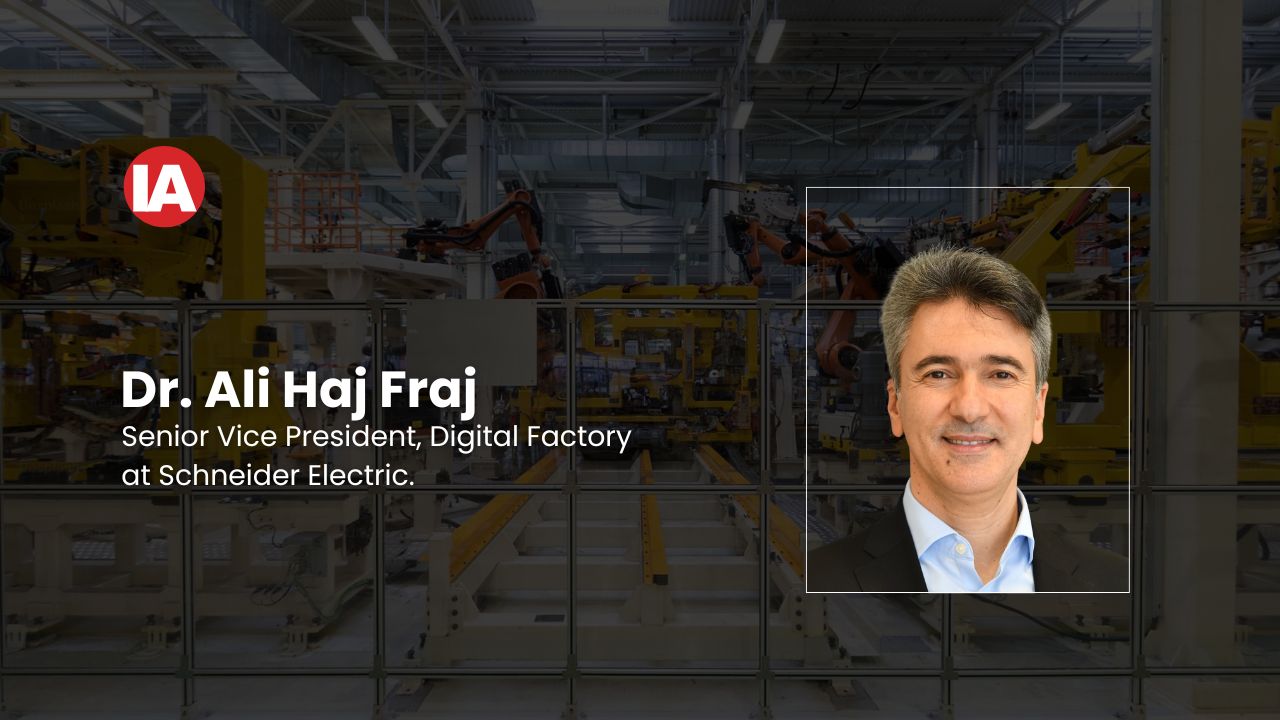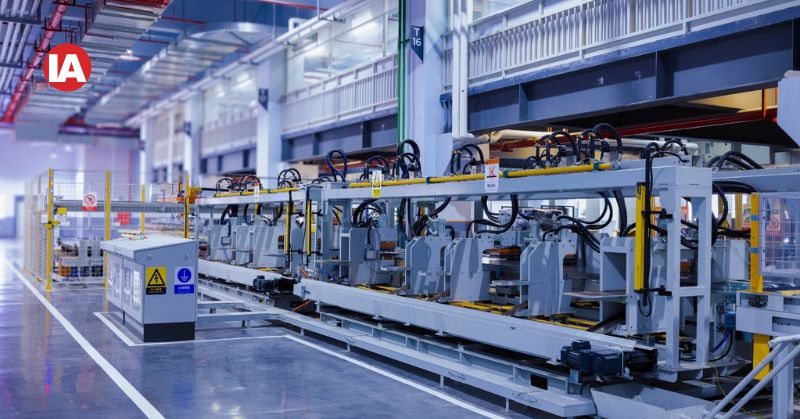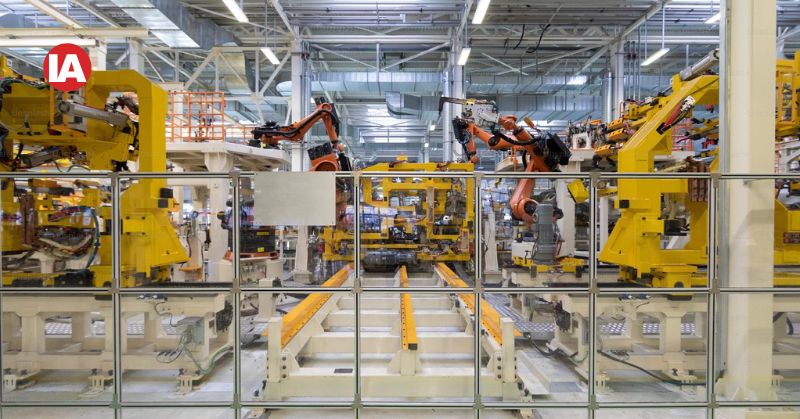
Digital Transformation, Virtualisation & Software-Defined Automation
Explore how digital transformation, virtualisation, and Software-Defined Automation are revolutionizing industrial operations, driving efficiency, agility, and cost savings in the manufacturing sector.
![[object Object]](https://admin.industrialautomationindia.in/storage/articles/article-SxGFoaqFS5KbrXXtfcZYpLe8rTQ1XXFmspqMtjeR.jpg)
The future of industrial operations hinges on digital transformation, virtualisation & Software Defined Automation, says Dr Ali Haj Fraj.

Keeping up with the latest technology can be tricky – and in the manufacturing sector it can feel impossible. As an industry that continues to rely on systems designed and installed decades ago, the latest leaps in manufacturing technology can elude even the biggest manufacturers.
However, change is happening at record speed and digital transformation is fast becoming a pivotal part of manufacturing strategy. Maximising efficiency, minimising errors, and reducing costs are the name of the game, and digital transformation is set to revitalise the whole industrial design, optimise, and operate cycle.
From merging data, converging IT and OT domains, and improving the flow of digital information to transforming the operation of physical processes and machinery with virtualisation and digital twin models, there is a huge opportunity to transform every step of the manufacturing process. A successful future for industrial operations hinges on wide-scale digital transformation, and will be powered by Software-Defined Automation (SDA). But why will this innovation be so crucial? And what does this look like in practice?

Software-Defined Automation (SDA) is on the horizon
SDA has transformed the traditional industrial automation model forever. As a core part of digital transformation, this new approach allows devices and equipment to connect freely across architecture layers, regardless of manufacturer. Engineers then have the freedom to use any hardware and software solutions they please and SDA allows them to work together in harmony.
This approach fundamentally changes the automation and design process. Already seeing much success in the world of IT, where users are free to develop applications based on their business needs and deploy them on the hardware platform which meets their performance needs, this means that manufacturing applications will become portable.
The shift to open, interoperable methodologies and tools is now well underway and manufacturer-dependent options are quickly becoming outdated. SDA allows customers to quickly adapt to changing regulations, market, and customer demands, while this approach better supports the needs of industrial customers rather than getting in the way of them.
It is clear that SDA presents an exciting opportunity for engineers to enhance efficiency, productivity, and flexibility. Emerging technologies enabled by Digital Transformation afford designers the freedom to build control applications from libraries of application objects in a ‘drag and drop’ manner, and then select automation hardware based solely on performance requirements. Going further, digital twins extend this concept to industrial process design by allowing machines or entire lines to be designed from libraries of asset objects, and then simulated virtually before they are built in the real world. Not only does this reduce errors, but saves manufacturing companies both cost and time.
So, let’s break down some of the key steps manufacturers can take to enhance efficiency and productivity by adopting some of these new approaches.
1. Automation ‘virtualisation’
With SDA’s ability to decouple hardware from software, it allows automation functionality to be deployed on any platform of choice. This opens the door to new functionalities such as virtualisation.
The term ‘virtualisation’ is commonly used to describe a scenario where several virtual machines (VMs) are set up on a single server. Although the premise stays the same in the context of industrial automation, it has various meanings on the move from physical to virtual worlds. The SDA model allows automation functions to run on different platforms instead of being tied to proprietary hardware and enables the capability to use almost any available computing resource to execute automation functions.
This ‘virtualisation’streamlines many standard processes such as consolidating Programmable Logic Controllers (PLC), Human Machine Interfaces (HMI), and Industrial PCs (IPC) on one hardware platform – but this is just the start. Much like in IT, where hardware costs are significantly reduced by running multiple virtual machines on a single server, virtualisation of industrial automation allows businesses to reduce both operating and capital expenses. Fewer physical servers also mean less hardware to maintain, operate and repair – boosting productivity for staff to focus on more hands-on activities.
As well as operational and cost benefits, virtualisation can support progress towards sustainability goals. The consolidation of computing and storage resources into a set of central services reduces an industrial company’s total energy use and Scope 2 Green House Gas emissions.
2. Soft programmable logic controllers
Known by manufacturers and engineers as the primary type of automation for machine control, PLCs can also be virtualised thanks to SDA innovations. This offers access to a new way of automating machines and processes, a ‘soft PLC’ or a hardware-agnostic, software-based controller which can be run on any Windows or Linux server, industrial PC (iPC) or microcomputer, no matter the supplier. Multiple instances of these virtualised controllers can be installed on the same piece of hardware and configured, deployed, and maintained both simultaneously and independently from one another.
It makes deploying new processes or replicating and modifying existing ones much easier. It also means that engineers now have the ability to make changes to processes without stopping production – minimising downtime, reducing costs, and providing the all-important flexibility and agility required to thrive in today’s demand-driven, dynamic consumer landscape. Building automation application programs from proven, reusable engineering significantly reduces time-to-market, increases engineering efficiency, and can offer an edge over the competition.
3. Digital twins
A key way to boost operational efficiency is with the introduction of digital twins. Put simply, a digital twin is a virtual model of a real-world object designed to accurately mirror a physical object or process. This approach allows new processes and machines to be tested in the virtual world before they are built, reducing errors, saving time and minimising costs. When part of the flow of industrial data they can also be used to model real world processes while those processes are running. Opportunities for improvement can be identified and potential improvement activities validated in the virtual world to make sure they work as expected in the real world.
Digital twins allow process designers to design production systems from libraries of asset-based objects (e.g., a robot, multicarrier transport system, etc.), using a ‘drag and drop’ approach. They can then optimise, test, and validate digital models of real machine solutions in the same virtual environment before they are built and commissioned in the real world. This enables workers to plan and test changes to the Digital Twin and then observe how performance would be affected when they are applied to the organisation for real.
Therefore, continuous improvement activities become far more efficient and effective. It is why researchers predict that by 2025, ‘80% of industry ecosystem participants will leverage their own product, asset, and process digital twins to share data and insight with other participants’.
The Digital Twin approach means that manufacturers no longer need to experiment with physical hardware to achieve optimised results. This can significantly increase efficiency as engineers can experiment with tools digitally instead of taking the traditional lengthy, costly, manual approach. They are free to get on with more fulfilling, valuable work, saving time to market by up to 50% and commissioning time up to 60% when compared with traditional approaches.
What does this look like in the real world?
The benefits of these new technologies for the manufacturing sector are unrivalled. SDA, virtual PLCs, and the use of Digital Twins provide large industrial companies with another significant benefit – scalability. Once a design is proven to work in one plant or application, manufacturers can deploy it in all similar applications and plants worldwide, saving time and money. Asset management also becomes simpler, with one standard set of corporate designs used globally without the vendor specific constraints of proprietary hardware. Continuous improvements and innovative updates can easily be deployed globally to maximise economies of scale. Selecting the right automation partner with an extensive global footprint can help further streamline deployment by ensuring the appropriate support is available wherever and whenever it’s needed.
When we look at this in real-world terms, industry leaders are already implementing SDA to optimise complex processes. For example, alliance system integrator partner Master Systèmes recently deployed a universal automation solution for Sophim, a manufacturer of natural ingredients for the cosmetics industry, to improve its production agility and efficiency.
Sophim wanted to modernise its legacy automation systems to an Industry 4.0 solution in a managed, low-risk, and agile manner as well as implement IT technologies that focused on predictive maintenance. To meet this demand, Master Systèmes implemented Schneider Electric’s EcoStruxure CPG solution which helped bridge IT and OT software in accordance with IEC61499.
Once implemented, Sophim was able to reduce design time and time to production thanks to simplified engineering, which is faster, less expensive, and significantly reduces configuration errors. Additionally, the manufacturer was able to increase operational efficiency with maintenance improvements that enabled rapid system configuration, resource reassignment, and updates to human and machine interfaces. This highlights the impact SDA can make in boosting efficiencies and saving costs.

It’s time for the manufacturing sector to transform
While traditional tools and technologies are quickly becoming obsolete, the new innovations on the block are consistently proving their ability to save time, money, and resources. Digitalised, virtualised smart manufacturing approaches will continue to set new standards in interoperability, ease and efficiency and truly shape the future of industrial operations. Businesses that embrace digital transformation will reap its rewards in the era of industry 4.0. However, those who fail to get onboard with SDA, digital twins, and virtualisation stand to suffer in the long run. The success of industry hinges on digital transformation.
Dr Ali Haj Fraj is Senior Vice President, Digital Factory at Schneider Electric.
Ali joined Schneider Electric as SVP of Machine Solutions for Industrial Automation in 2015. He expanded his role by taking up the leadership of Schneider’s Digital Factory business in 2021. Ali has spent 20 years in different roles in Industrial Automation and Energy Management including various leadership positions in R&D, sales and marketing, business development, strategy, and general management. This experience and his knowledge of dedicated customer markets is combined with a proven track record in driving innovation and global business growth as well as digitisation.
Ali started his career as Motion Control Project Manager for Siemens AG in 2001 in R&D, before working in business development and then energy management.
______________________________________________________________________________________________
For a deeper dive into the dynamic world of Industrial Automation and Robotic Process Automation (RPA), explore our comprehensive collection of articles and news covering cutting-edge technologies, robotics, PLC programming, SCADA systems, and the latest advancements in the Industrial Automation realm. Uncover valuable insights and stay abreast of industry trends by delving into the rest of our articles on Industrial Automation and RPA at www.industrialautomationindia.in